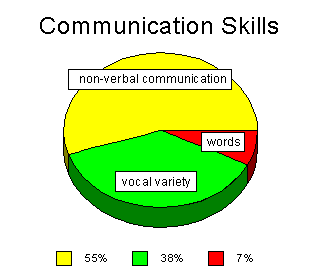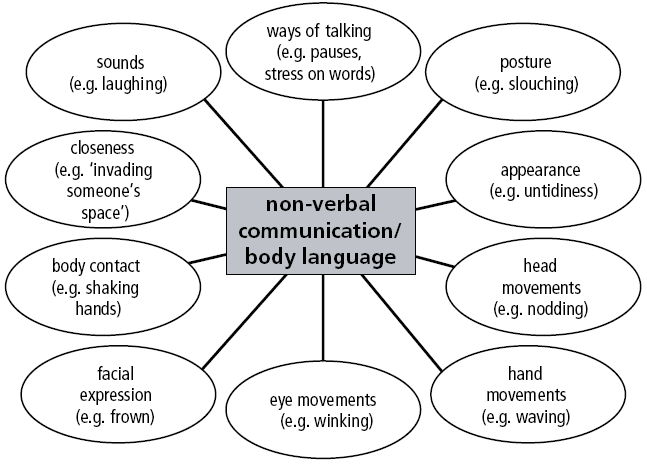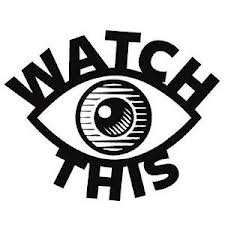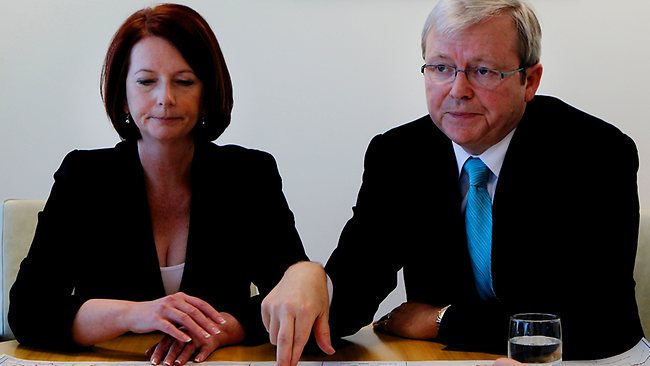

Portfolio exercises on Non Verbal Communication
Portfolio exercise on Referencing and Citation
Week 4 Lecture audio (note this is an old version as I accidentally deleted the lecture I recorded on Thursday).
![]() Not sure what to do for Assignment 2?
Not sure what to do for Assignment 2?
Check out this video of Ray Archee explaining the assignment to his class at Penrith. Dig the 'Magnum PI' shirt!
For a higher quality version, click here.
Q: What is the relationship between verbal and non-verbal communication as outlined in the reading(s)? Can you give other examples?
As
we saw last week with our discussion about language, an understanding of
how it works and how we communicate is not simple. This week we are
looking at another 'layer' of the communication puzzle which is both
complex and
fascinating – non verbal communication. According to a famous
research project done in 1981 by Dr
Albert Mehrabian of UCLA , a large proportion of what we understand
when we communicate is not from the words a speaker uses. Mehrabian's experiments estimated
that the influence of non verbal factors in a face-to-face communication
encounter was as follows:
, a large proportion of what we understand
when we communicate is not from the words a speaker uses. Mehrabian's experiments estimated
that the influence of non verbal factors in a face-to-face communication
encounter was as follows:
55% body language (gestures, facial expressions, eye gaze)
38% tone of voice
7% words used
In contrast, interpersonal communication researcher Mark Knapp (1992, 15) writes that …
the average person actually speaks words for a total of only 10 to 11 minutes daily – the standard spoken sentence only taking about 2.5 seconds. In a normal two-person conversation, the verbal components carry less than 35 percent of the social meaning of the situation; more than 65 percent of the social meaning is carried on the non verbal band.
While there have been challenges
to Mehrabian's and Knapp's theories, their research nevertheless highlights
the complexities of non verbal communication. This is an important skill
in both the workplace
and personal life. Knowing how to project positive body
language for example is extremely important when you go for a job
interview or when you give an oral
presentation as these articles
illustrate. Therefore, even if we don't always intend to communicate, our non
verbal signals can give a different message as this picture illustrates.

For a detailed overview, read Chapter 3 of your textbook.
There are a variety of definitions. Here are a few.
Kendon (1981) says that non verbal communication is "ways in which communication is effected between persons when in each other’s presence other than words.”
Fleur et al (1993) define it as “ … the deliberate or unintentional use of objects, actions, sounds, time or space so as to arouse meanings in others.”
Finally, Samovar et al (1997) say “non verbal communication involves those non verbal stimuli in a communication setting that are generated by both the source [speaker] and his or her use of the environment and that have potential message value for the source or receiver [listener].
Like most disciplines, there are a variety of aspects which come under the banner of non verbal communication. The term has been popularised by writers such as Australian Allan Pease and many think that non verbal communication and body language are one and the same. Non verbal communication is a much broader study. It is both intentional and unintentional. Most speakers / listeners are not conscious of this. It includes, but is not limited to:
touch (haptics)
eye contact or gaze (oculesics) – see this discussion from Dr Karl on the relationship between the eyes and honesty.
vocal nuance/sounds other than words/intonation/volume (vocalics or paralanguage)
proximity/use of personal space (proxemics)
gestures/facial expression/posture (kinesics) – see this article from UNSW titled 'Are you furious: Body cues tell us more than faces'
dress
smell (offactics)
use of time (chrometics)
use of artefacts/objects (eg a big desk to signify the status of the boss)
Try doing some internet research on one of these topics. They are each an area of study on their own.
Check out this powerpoint slideshow (PDF form) which gives some good information on these aspects.
 |

Used to repeat the verbal message (e.g. point in a direction while stating directions.
Often used to accent a verbal message. (e.g. verbal tone indicates the actual meaning of the specific words).
Often complement the verbal message but also may contradict. E.g.: a nod reinforces a positive message (among Americans); a “wink” may contradict a stated positive message.
Regulate interactions (non-verbal cues covey when the other person should speak or not speak).
May substitute for the verbal message (especially if it is blocked by noise, interruption, etc) — i.e. gestures (finger to lips to indicate need for quiet), facial expressions (i.e. a nod instead of a yes).
A large area ofstudy in communicationrelates to the differences in non verbal behaviours between cultures. While we will look at inter-cultural communication later in the course, it is worth pointing out some of the issues here. One of the major theorists of the 20th century in this area is Edward T Hall, an anthropologist whose books The Silent Language and The Hidden Dimension (among others) have been extremely influential in this area of study. Here are some of the other differences which may be of interest from a site called Non Verbal Communication Modes.


Celebrities and politicians are regularly pilloried for poor use of non verbal communication. Recent examples include Opposition leader Tony Abbott's 'death stare' in response to his "shit happens" comment in Afghanistan. Check it out here.
His deputy Julie Bishop is also well known for using this tactic as she did last year when confronted with an awkward question on the ABC's Q & A program. See it here.
Others who have fallen foul of the media include former PM Kevin Rudd with then NSW Premier Kristina Kenneally, as well as serial offender Mark Latham, former leader of the Labor Party whose style was brought to light when he encountered them PM John Howard. Here's the clip from YouTube. What does the handshake signify in terms of the power relationship between the two men?
  |
Class & Portfolio Exercise 1: The impact of social distance: 1. Read either Case Study 3.2 (p. 69) or Case Study 3.3 (page 71) of your textbook. In groups of 3-4, discuss the impact of social distance on the situations being described. In both cases, answer the questions which follow. 2. During the next few days, observe and make notes about the eye contact behaviour of people you meet in public places. Some settings you might like to consider are: lifts, escalators, footpaths, crowded shopping centres, trains/buses, cinema foyers. Try to identify a variety of non-verbal behaviours that people are using consciously or subconsciously and what they might mean in this context
Portfolio Exercise 2: Facial Expressions: Read through the extract Face Values in the tutorial readings link above) from Paul Ekman (this is his website). Summarise the main points he is making about facial expressions as a universal indicator of emotions. What problems did he have in trying to do his research?
Portfolio Exercise 3: Identifying NVC on television: Have a look at one of your favourite comic TV shows, like Big Bang Theory, Two Broke Girls, or Two & Half Men or even reality shows like Masterchef or The Block. Turn the volume down, then list typical NVC behaviours you can see. As a starter, check out this link from Big Bang Theory.
Portfolio Exercise 4: Revision on referencing: In order to revise our sessions on referencing and citation of the last two weeks, download this exercise (Word version | PDF version) and complete the questions. Remember to check out the APA Style Guide and the Referencing and Citation flash tutorial if you are having problems.
The truth behind the smile and other myths: when body language lies
The importance of non verbal communication in professional interpretation
Our textbook has been newly revised especially for this unit. Most lectures and many class activities will be based on the book, so we recommend that all students have access to a copy and bring it to class every week. Copies will be made available in the Library Closed Reserve.
In addition, class discussions and presentations will be based on more specific readings on the weekly topic. These can be found under the 'Tutorial Readings' tab at the top of this page.